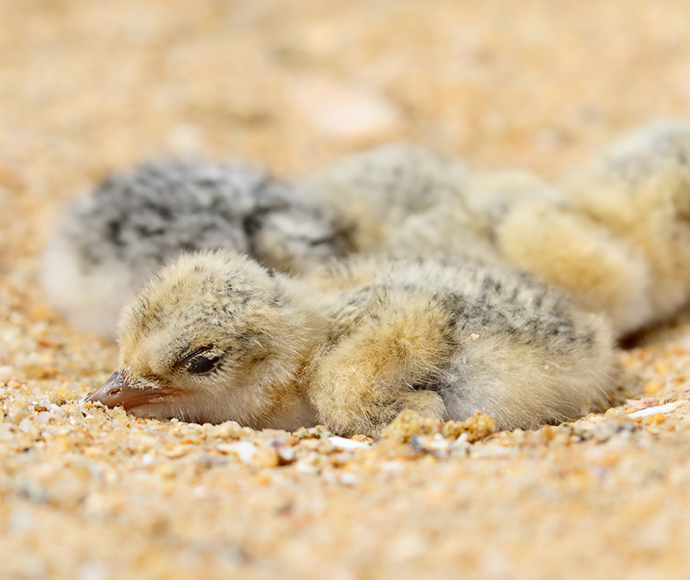Gorgeous little sand-coloured chicks can be seen along south coast beaches this summer, as breeding season is in full swing for endangered little terns, pied oystercatchers and critically endangered hooded plovers.

National Parks and Wildlife Service (NPWS) Shorebird Ranger, Kaitlyn O'Brien, is urging far south coast beachgoers to keep an eye out for these extremely cute, yet vulnerable young ones, some no bigger than the size of a Christmas bauble.
"NPWS and the South Coast Shorebird volunteers are extremely pleased that we have already seen pied oystercatcher chicks fledge from Wagonga Inlet at Narooma and further south at Disaster Bay," Ms O'Brien said.
"We are currently monitoring nests south of Moruya and near Tanja, as well as several chicks along the coast.
"While we are only mid-way through the season things are looking pretty good for this species," Ms O'Brien said.
NPWS Shorebird Ranger Anna Mueller is monitoring birds along the coastline between Wollongong and Batemans Bay and is cautiously hopeful for the critically endangered Hooded Plovers this season.
"We have already seen 5 fledglings and are currently keeping an eye on at least three chicks and a further 2 nests," Ms Mueller said.
"The range of the Hooded Plover has declined in eastern Australia since European settlement and on some parts of the NSW coast they are locally extinct, that's why these sightings down south are so precious.
"Now is the critical time in these endangered bird's breeding cycle, yet it coincides with peak summer crowds, increasing the risk that eggs and chicks will be trampled or disturbed," Ms Mueller said.
NPWS and volunteers will continue to work right through summer to protect these birds.
The best ways for beachgoers to also help are to:
- Look out for bird nesting signs or fenced-off areas on the beach. Stay well clear of these areas and give the parent birds plenty of space.
- Walk your dogs on designated dog-friendly beaches and keep them on a leash.
- Walk on the wet sand. Eggs and chicks are well camouflaged and very vulnerable to accidental trampling.






